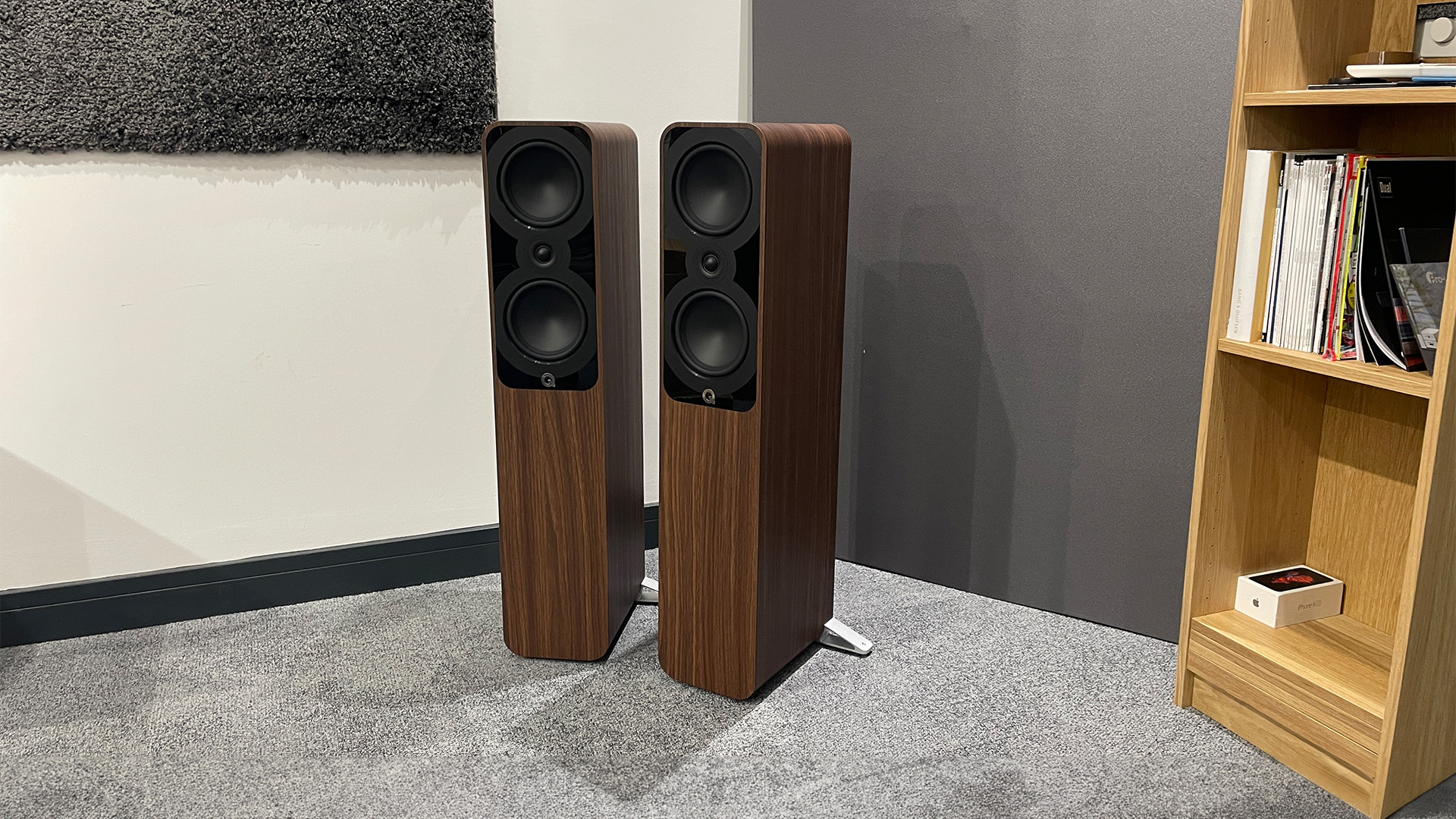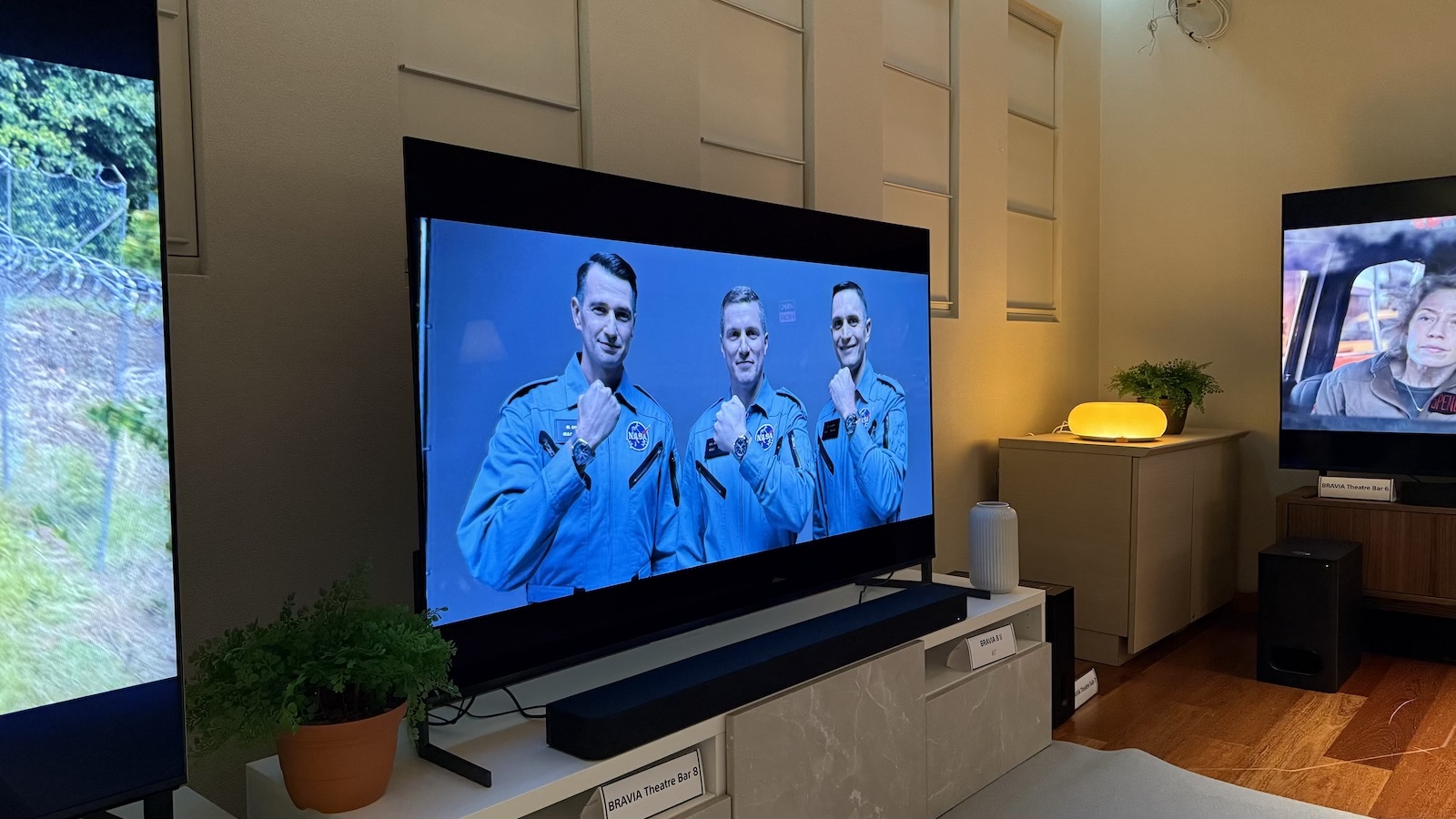What Hi-Fi? Verdict
The Q Acoustics 5050 are pleasingly mature sounding speakers that deliver impressive clarity and scale. They need careful system matching to shine, though
Pros
- +
Clarity and insight
- +
Strong dynamics with impressive bass
- +
Pleasing rhythmic drive
- +
Slick build
Cons
- -
Needs care in partnering
- -
Works best in larger rooms
Why you can trust What Hi-Fi?
The arrival of the new 5000 range marks something of a new dawn for Q Acoustics. It signals a determination to make more of an impact at premium price points and, perhaps more surprisingly, a shift in sonic signature.
Up until we reviewed the Award-winning Q Acoustics 5040 floorstanders late last year, every stereo speaker we had heard from Q Acoustics displayed a remarkable consistency of sonic character. They were refined, insightful and undemanding to match. These were the very qualities that made them so recommendable. Against the very best they could also be accused of playing things a little safe, reining back the drama in the music just a touch in exchange for an easier listen.
The 5040 floorstanders, and subsequent experience with the rest of the 5000 series, shows that things have changed. There has been a notable shift in emphasis, with dynamism, clarity and agility now more prominent though at the cost of some loss of natural warmth and an unfussy nature. But, once partnered with care, the 5040 did well, earning a five star review and winning the Product of the Year accolade in the best floorstanding speakers category at our last Awards. Not bad, eh?
Design
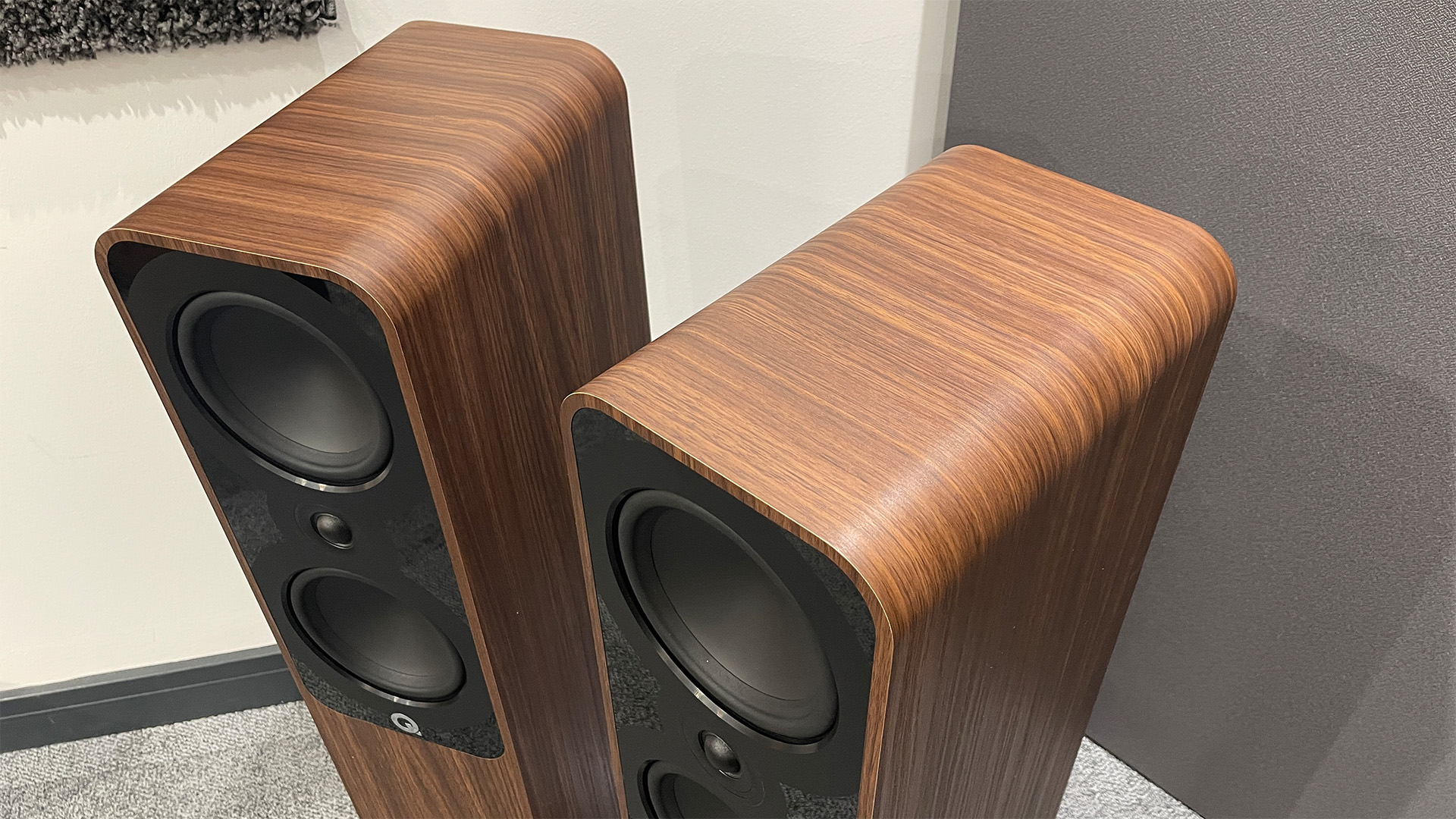
But what happens if you take this award-winning recipe and scale it up a bit? The result is the range-topping Q Acoustics 5050 we have on test here. The most significant changes between the two models are as follows: the 5050’s twin mid/bass drivers are bigger (15cm vs 12.5cm) as is the cabinet (internal volume of 39.7 vs 27 litres). Visually, the new floorstanders look more dominating and certainly will benefit from being used in larger spaces.
In overall terms, the basic engineering remains the same, with the technical highlight being the use of a smooth, seamless profile for the mid/bass diaphragms. The shape of this Continuous Curved Cone, as Q Acoustics calls it, avoids the use of a traditional dustcap, and so its inherent distortions, but is also claimed to incorporate the best characteristics of straight-sided and flared cone designs (namely bass, and control at higher frequencies, respectively). And cone material? It is the same as in the smaller model, impregnated paper.
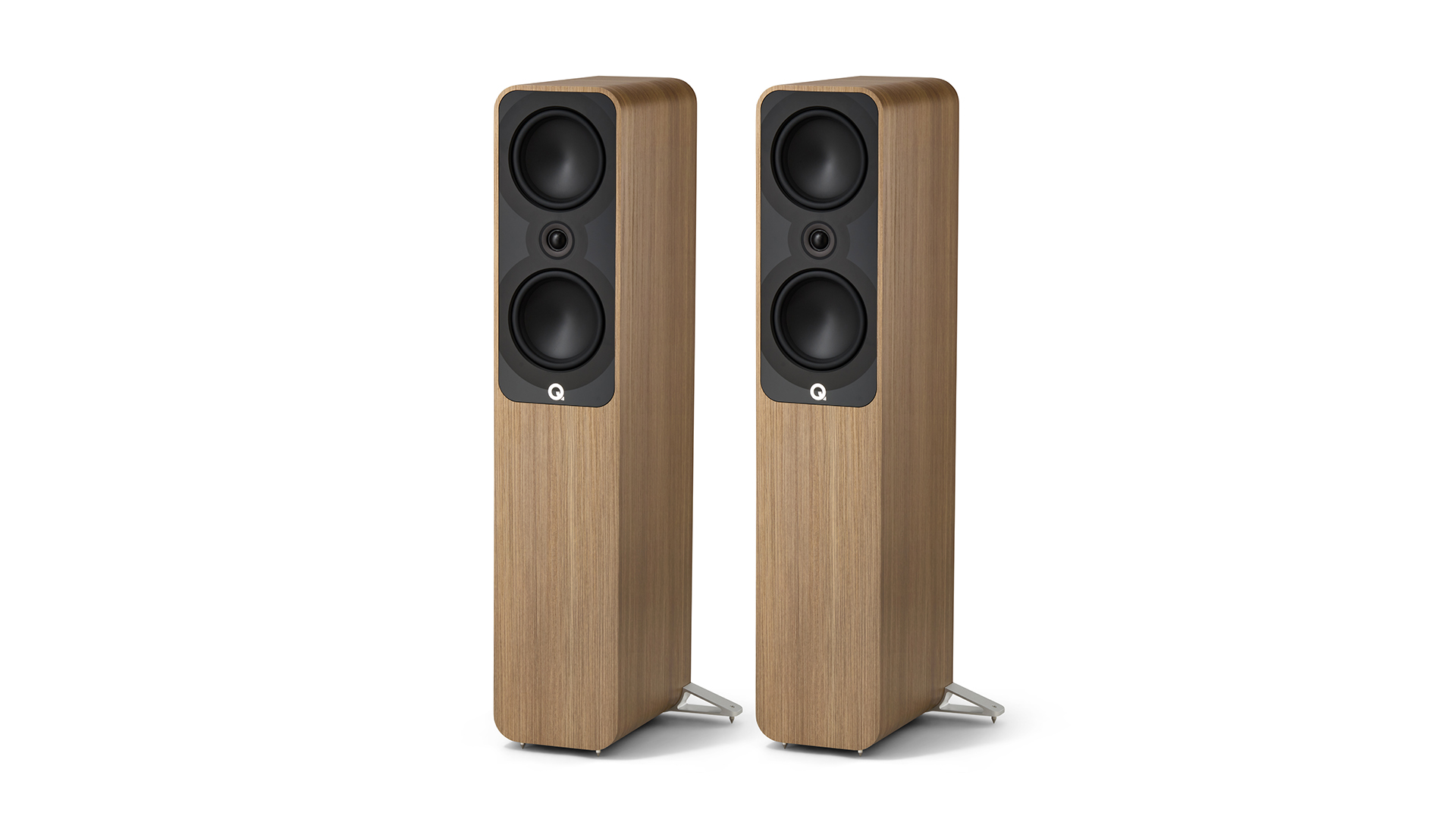
Type Floorstanders
Drive units 25mm soft dome tweeter, 15cm mid/bass x2
Ported? Rear
Bi-wire? No
Impedance 6 ohms
Sensitivity 91.8dB
Dimensions (hwd, with feet attached) 101.7 x 38.6 x 33.6cm
Weight 21.6kg
Finishes x 4 (Satin Black, Satin White, Holme Oak, Santos Rosewood)
The 5050’s crossover point between the twin mid/bass units and 25mm soft dome tweeter is set at a fairly conventional 2.7kHz. The tweeter is vented and derived from the design used in the more upmarket Concept series. It is hermetically sealed and decoupled from the front baffle to provide isolation from pressure changes in the cabinet, as well as the mechanical vibrations generated by the mid/bass drivers.
The 5050’s larger mid/bass drivers necessitate a cabinet that is notably wider than the one used by its junior sibling. This enclosure feels nicely made and well-finished. It is rigid too, thanks to carefully considered internal bracing. The front baffle is lined with a layer of butyl rubber (to damp resonances) and glossy black acrylic trim (to look nice). There are four finish options for the cabinet: Satin Black, Satin White, Holme Oak and Santos Rosewood. On first unpacking the speakers you will need to fit a pair of aluminium stabilisers to each one. These are each attached via a pair of Allen bolts and are an easy fit.
Take a look inside the enclosure and you will find four Helmholtz pressure equalising tubes. We first came across this unusual technique to control internal air pressure and reduce standing waves in Q Acoustic’s high-end Concept 500 floorstanders. It worked well in that design and there is no reason to think it won’t do the same here.
Compatibility
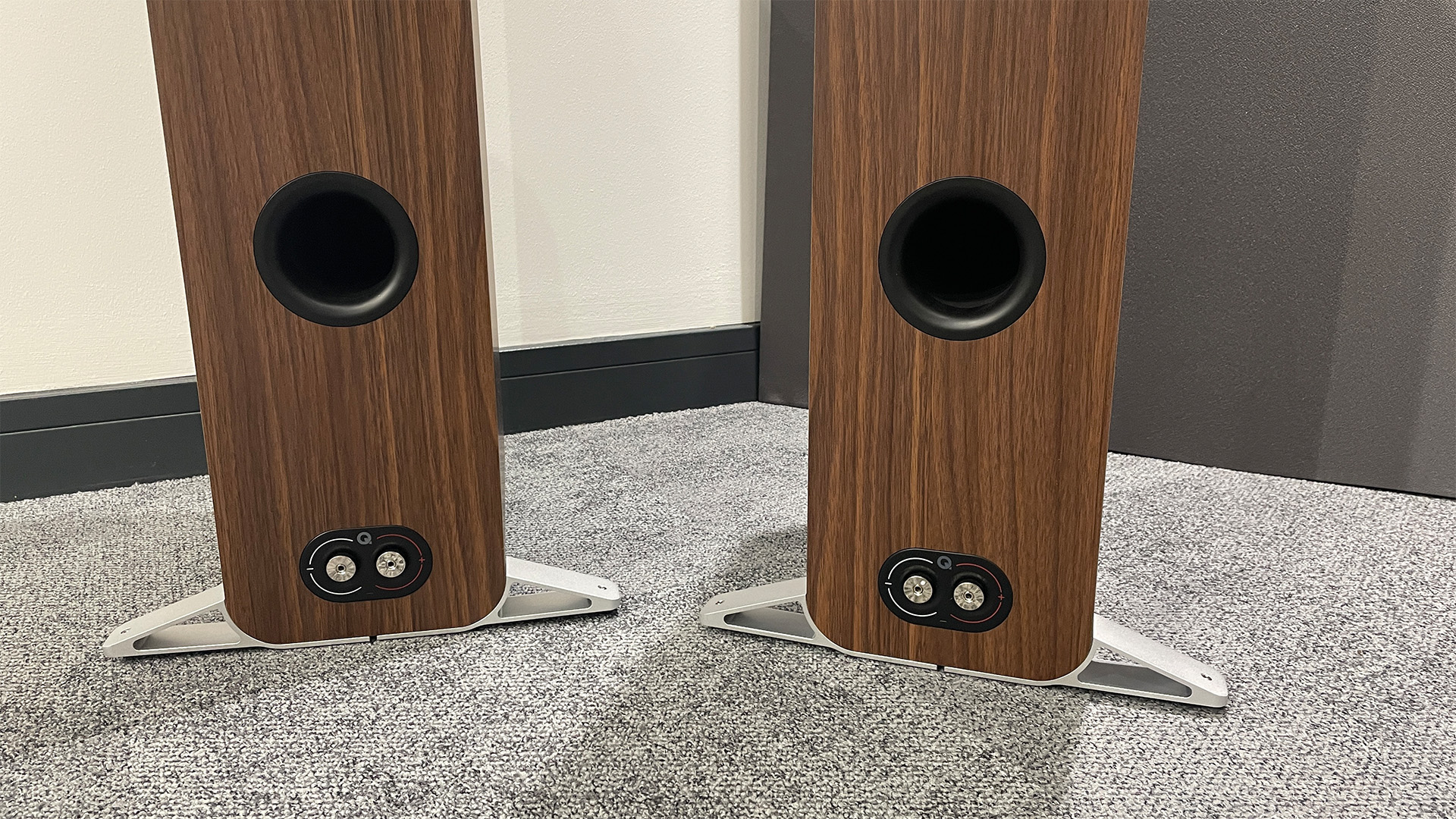
While the 5050’s relatively high sensitivity of 91.8dB/W/m means that it will produce good sound levels with budget amplifiers, it deserves more talented partners. We think that Arcam’s A5 (£750 / $699 / AU$1495) integrated or Cambridge Audio’s similarly-priced CXA81 are good starting points for amplification and should be used with similarly talented sources such as the Arcam CD5 CD player, Rega Planar 3 record player or Cambridge Audio CXN100 music streamer.
To see how far the 5050 floorstanders can be pushed we also use our reference system of Naim ND555/555 PS DR music streamer, Technics SL-1000R/Vertere Dark Sabre MM record player, Cyrus Phono Signature phono stage and Burmester 088/911 Mk III amplifier. We have a pair of the Q Acoustics 5040 on-site for comparison, as well as PMC’s Prodigy 5 floorstanders, KEF’s LS50 Meta and our reference ATC SCM50 speakers.
Sound
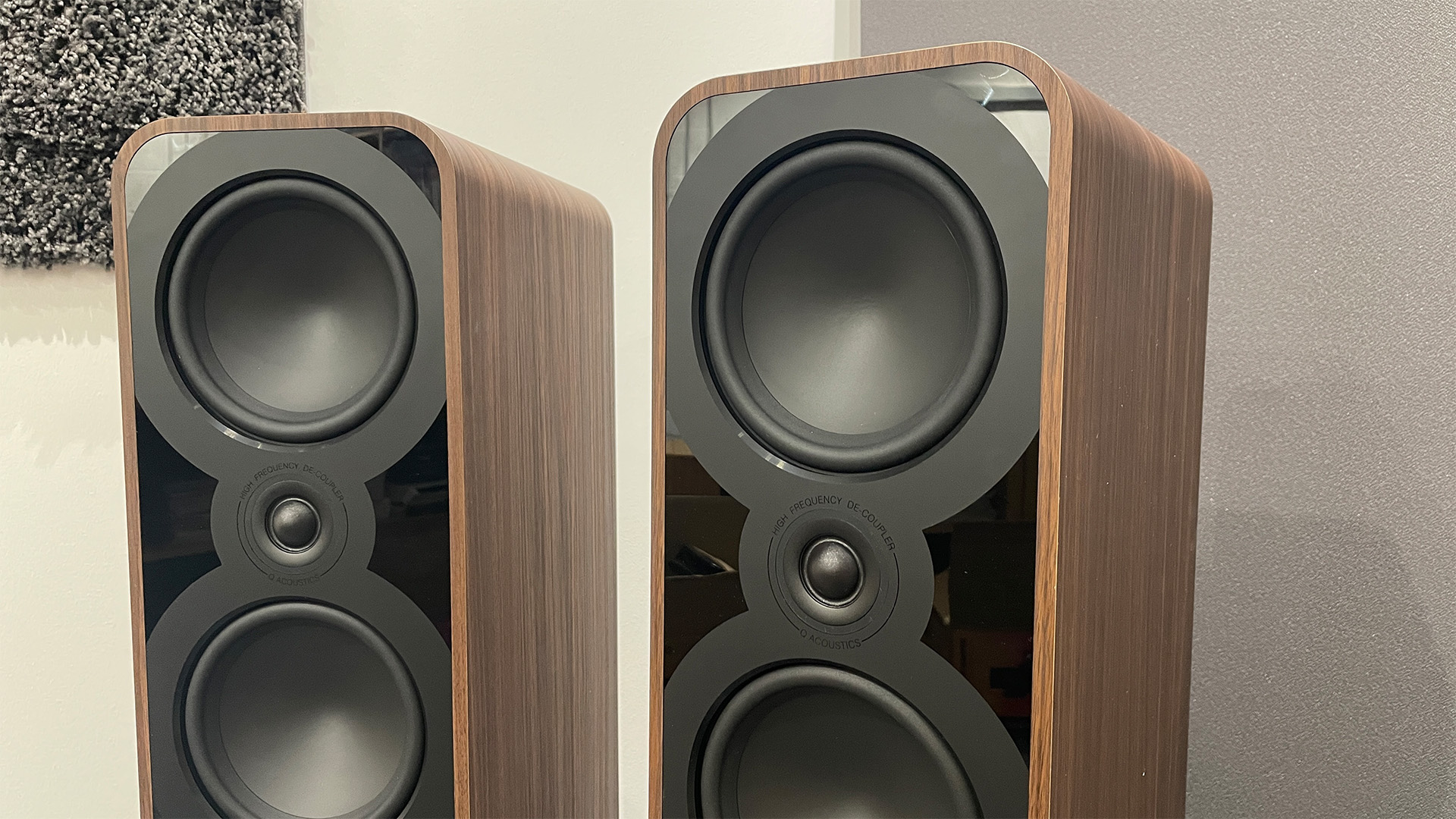
The comparison with the smaller 5040 is an interesting one. The two share much, and that common engineering is readily apparent in the excellent detail resolution, seamless cohesion from top to bottom and generally articulate natures. Take a look at the specifications and the 5050 is only claimed to go 2Hz deeper in the bass (37Hz vs 39Hz), but in use that translates into considerably more low-frequency heft and gives the speakers a calmer, more mature disposition.
Despite that extra dose of bass, they aren’t much fussier about room position. The 5050’s lows are taut and articulate, displaying a surprising amount of control for a floorstander at this level. It means that they can be pushed closer to a rear wall than most similarly-sized alternatives and still sound even. In our 3 x 7 x 5 m (hwd) listening room, we can place them as close as 30cm to the rear wall without great issue. There are foam bungs provided in the box to block the rear-firing reflex ports should excessive bass prove a problem in your room, though using them does tend to compromise the speaker’s overall balance.
Get the positioning right and you will be greeted by some of the most controlled and articulate bass that we have heard from a tower at this level. As we listen to Time from Hans Zimmer’s Inception OST it is hard not to be impressed by the depth and definition of the music’s complex and oh-so-powerful lows. The 5050 sound composed and unstressed even as volume levels rise.
But there is more here than just good bass. Given a little space to breathe and a slight angle towards the listening position, you will find that the 5050 generates a generous soundstage that is well-focused and nicely layered. The positions of sounds and instruments are stable and locked into place even when the music becomes demanding.
Their tonal balance is still a touch forward, so it pays to take care with system matching. Out of the box, we are a little bothered by treble that sounds a bit hard and peaky. Over a few days of use, this trait calms down but can still bite if you partner these speakers with bright or aggressive amplification. Older generations of Q Acoustics are notably less fussy about partnering equipment.
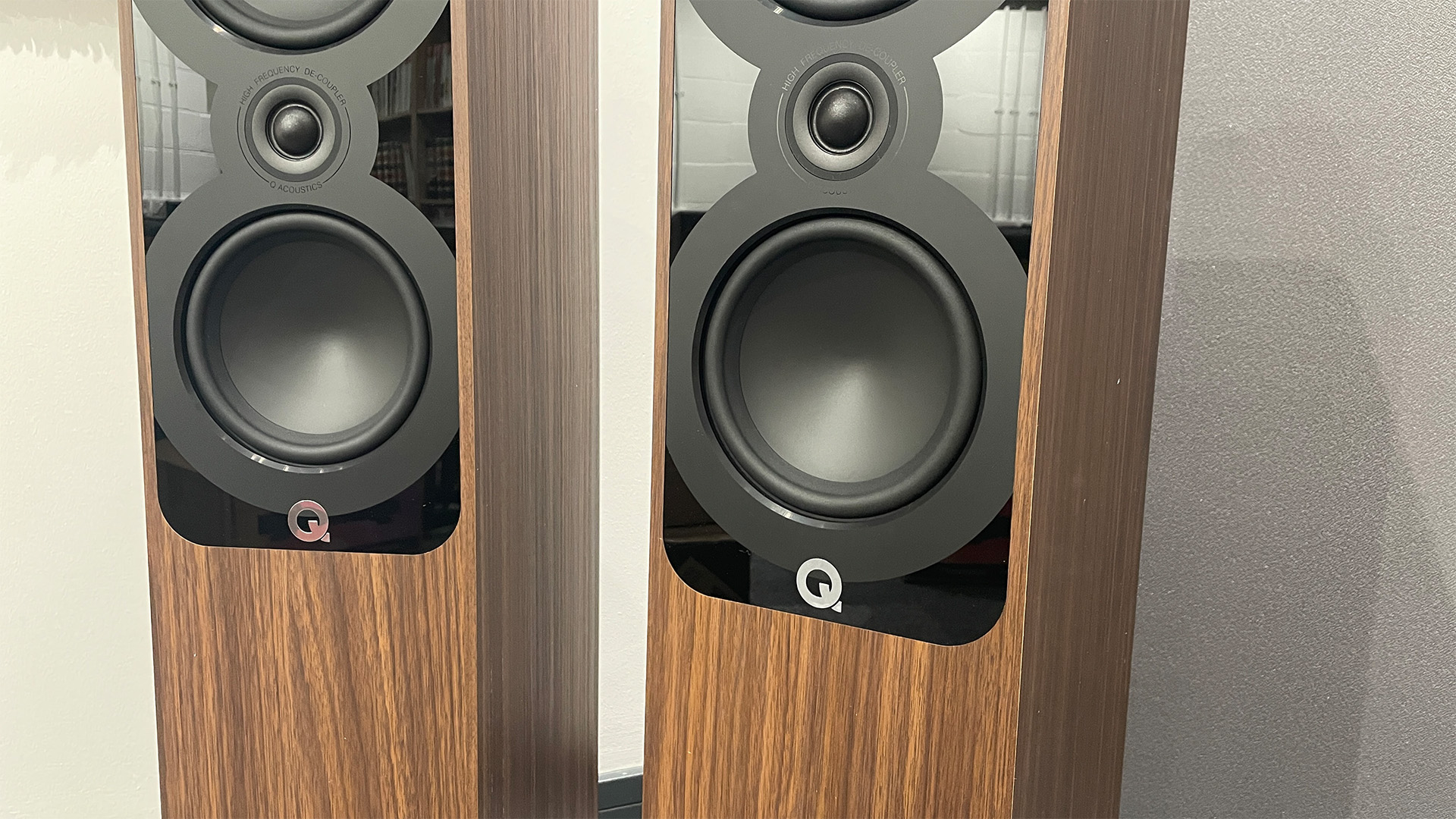
There is no questioning the clarity and insight on offer though. Like their junior siblings, these speakers dig up plenty of detail. They can delve into complex productions like Steve Reich’s Music For 18 Musicians and deliver clear insights. They never sound confused and manage to keep hold of a multitude of instrumental strands without losing track of the musical whole. That is not an easy thing to do.
We’re impressed by the 5050’s dynamic abilities too. They can go from a whisper to an orchestra at full bore effortlessly, while still having the skill to convey the nuance and passion in a solo voice, something made clear when we play Nina Simone’s Mississippi Goddam. In absolute terms, it would be nice to have a little more natural richness through the midrange, but it is hard to argue with the 5050’s articulation and finesse in this region. The speakers make the most of the song’s energy and prove surprisingly deft at conveying the irresistible rhythmic drive of the piece. This rhythmic ability is confirmed when we listen to Massive Attack’s Heligoland set later on in our listening session, as is the speakers’ enviable range of talents at low frequencies and dynamic punch.
Verdict
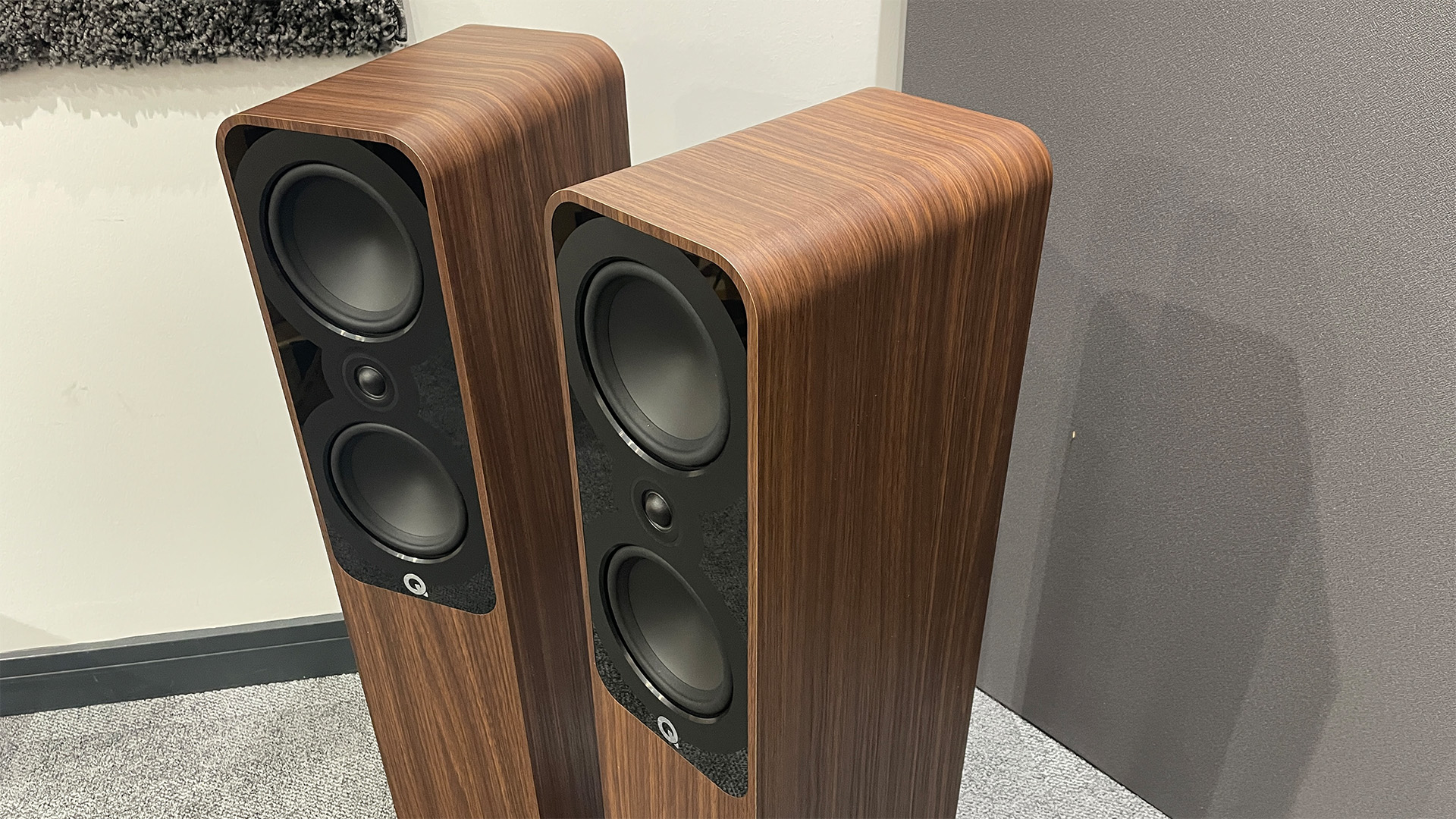
It would have been easy for Q Acoustics to mess up here. The smaller 5040 are excellent speakers and scaling the ingredients could have fallen flat. As it is, the Q Acoustics 5050 floorstanders do everything their junior siblings can do but add an extra dose of authority and a slightly calmer manner. If you have the space and extra budget, this is where our money would go.
Review published: August 2024. Review updated: November 2024.
SCORES
- Sound 5
- Build 5
- Compatibility 4
MORE:
Read our review of the Q Acoustics 5040
Also consider the Wharfedale Evo 4.4
Read our Dali Oberon 5 review
Best floorstanding speakers: budget to premium tested tested by our experts
What Hi-Fi?, founded in 1976, is the world's leading independent guide to buying and owning hi-fi and home entertainment products. Our comprehensive tests help you buy the very best for your money, with our advice sections giving you step-by-step information on how to get even more from your music and movies. Everything is tested by our dedicated team of in-house reviewers in our custom-built test rooms in London, Reading and Bath. Our coveted five-star rating and Awards are recognised all over the world as the ultimate seal of approval, so you can buy with absolute confidence.
